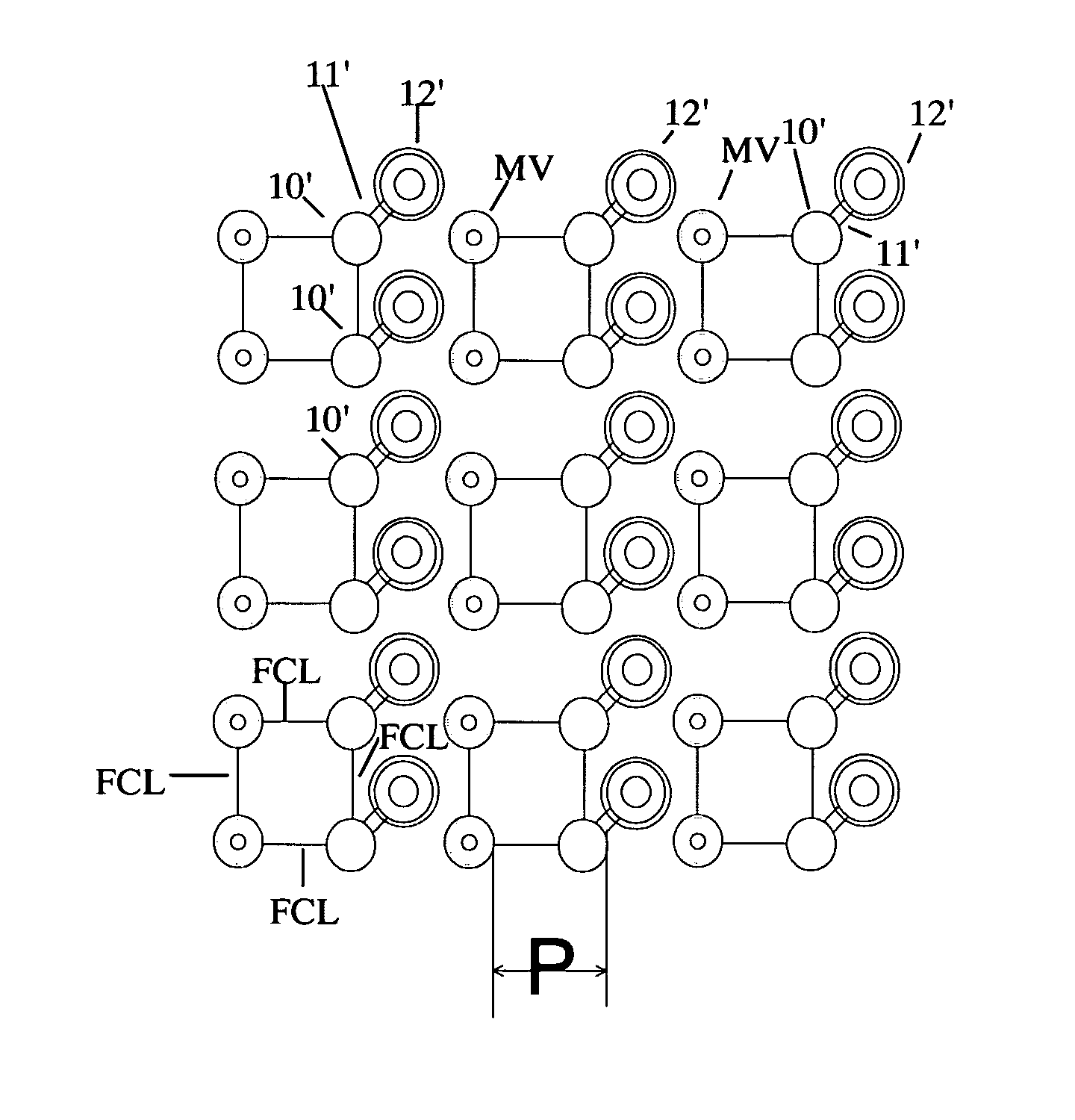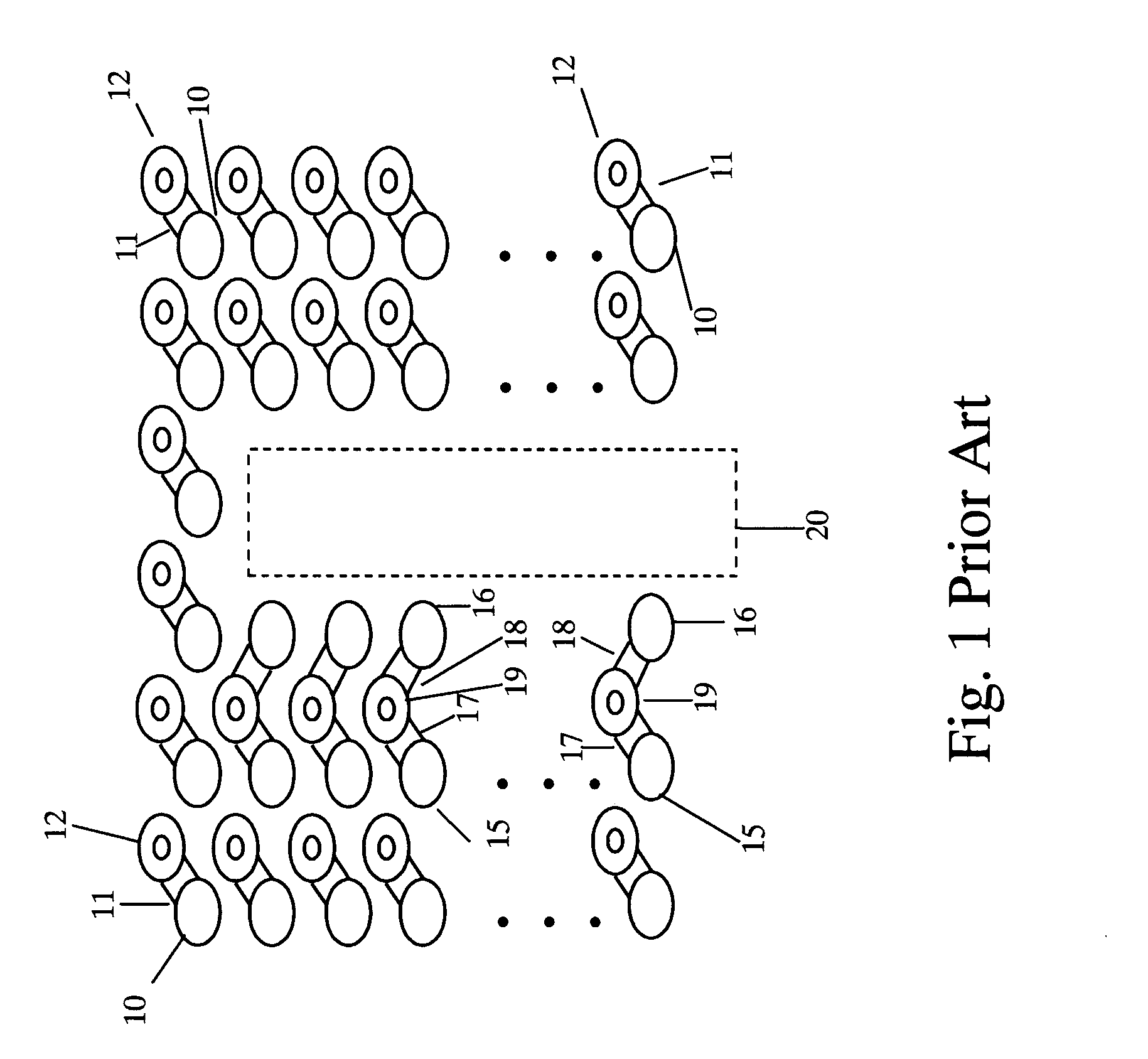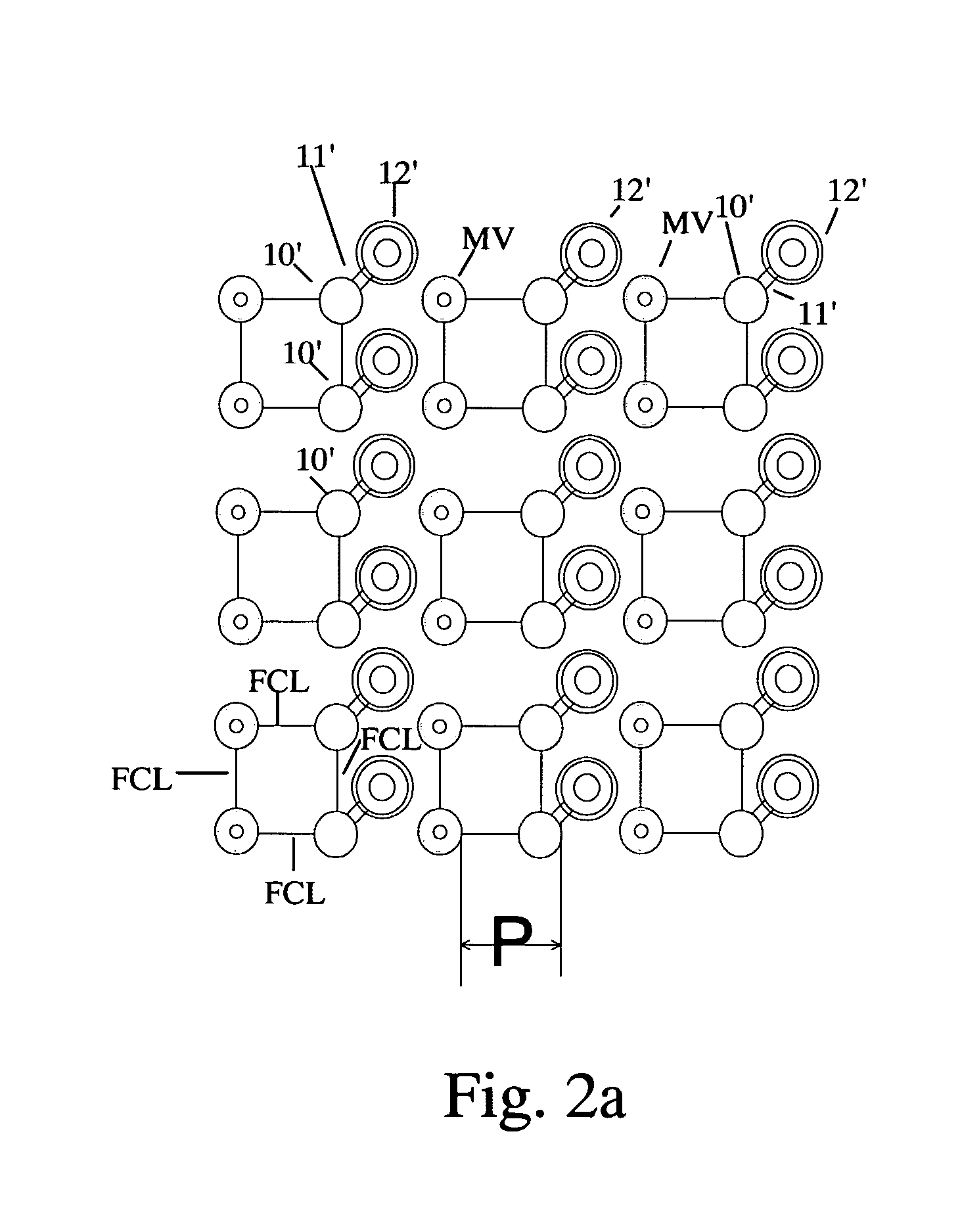Using rows/columns of micro-vias to create PCB routing channels in BGA interconnect grid (micro-via channels)
- Summary
- Abstract
- Description
- Claims
- Application Information
AI Technical Summary
Benefits of technology
Problems solved by technology
Method used
Image
Examples
Embodiment Construction
[0021]FIG. 1 is a top view of a surface layer of a printed circuit board (PCB) incorporating one prior art solution. Ball grid array (BGA) ball contact pads 10 are linked by links 11 to through-board vias 12. In order to provide a routing channel 20, selected rows of ball contact pads 15 and 16 are connected through links 17 and 18 to common through-board vias 19 which are designated herein as shared through-board vias. See the above discussion for the disadvantages of this solution.
[0022] The present invention is illustrated in FIGS. 2a, 2b and 2c. (The elements with prime numerals correspond to elements in FIG. 1.) The first three circuit board layers are shown to illustrate the requirements of the BGA package.
[0023] By creating columns and / or rows of micro-vias interspersed with columns / rows of regular through vias as frequently as every second column or row, columns and rows of through-vias can be eliminated in these locations. In FIG. 2a, columns of micro-vias MVC1, MVC2, MVC...
PUM
 Login to View More
Login to View More Abstract
Description
Claims
Application Information
 Login to View More
Login to View More - R&D
- Intellectual Property
- Life Sciences
- Materials
- Tech Scout
- Unparalleled Data Quality
- Higher Quality Content
- 60% Fewer Hallucinations
Browse by: Latest US Patents, China's latest patents, Technical Efficacy Thesaurus, Application Domain, Technology Topic, Popular Technical Reports.
© 2025 PatSnap. All rights reserved.Legal|Privacy policy|Modern Slavery Act Transparency Statement|Sitemap|About US| Contact US: help@patsnap.com



